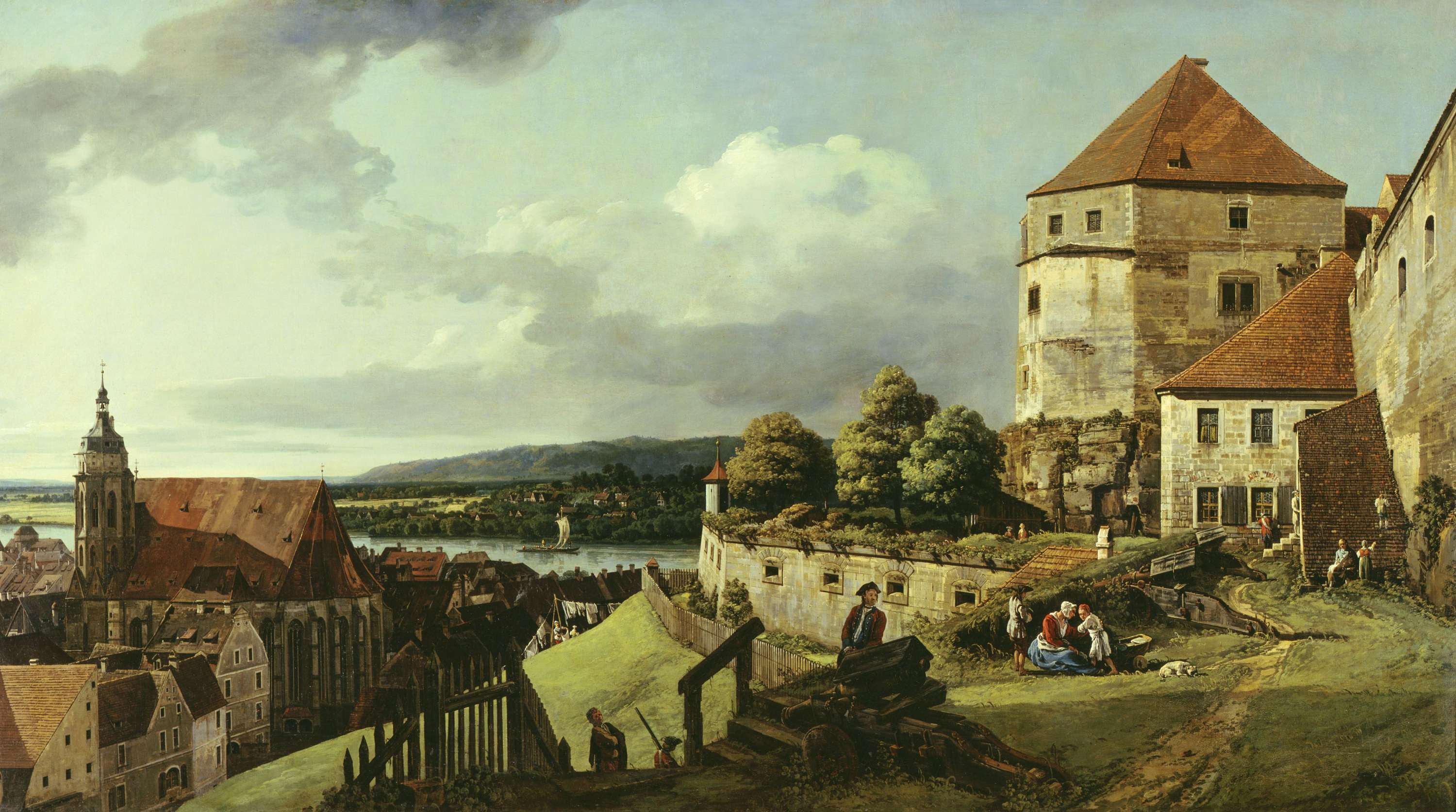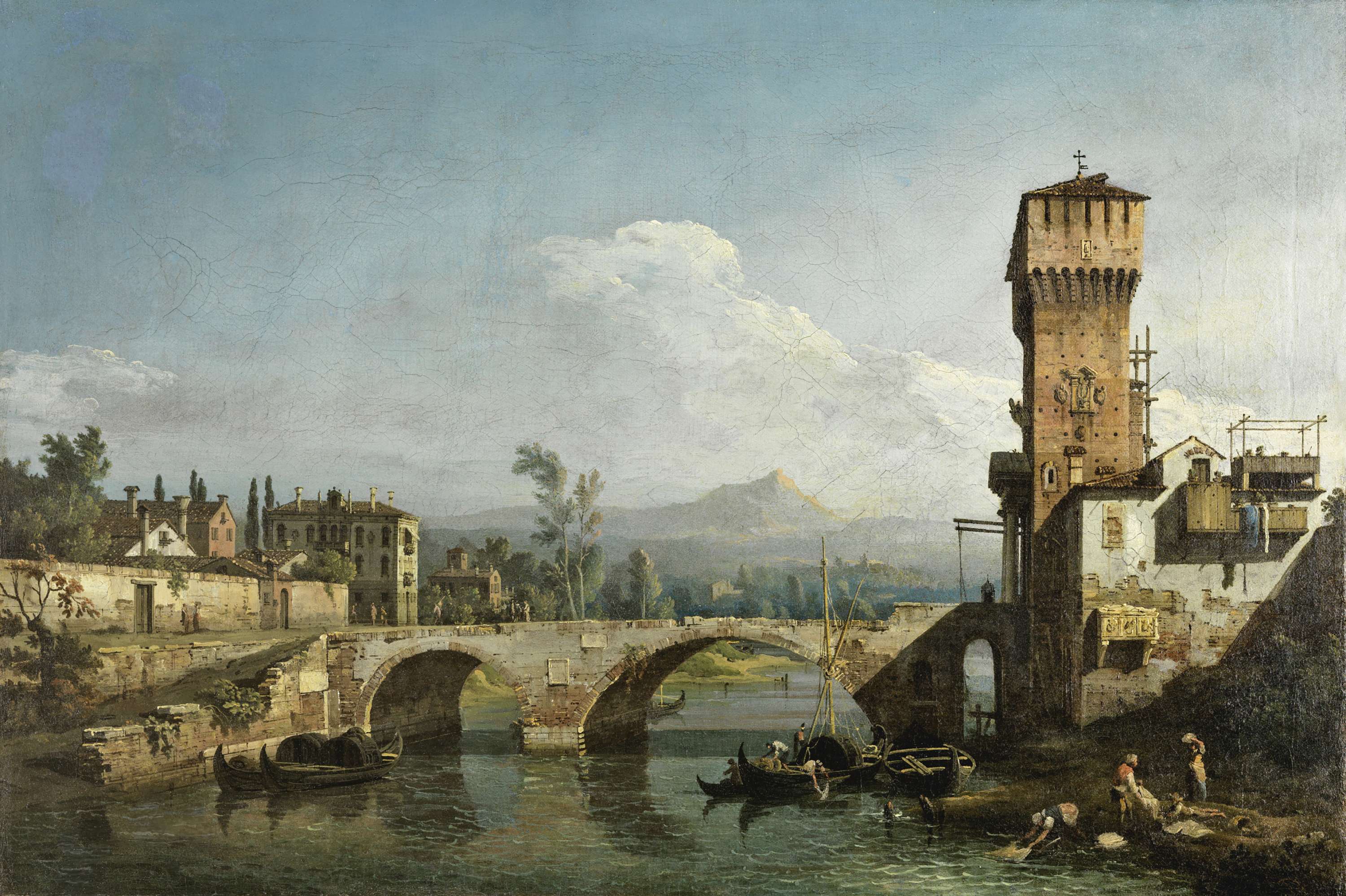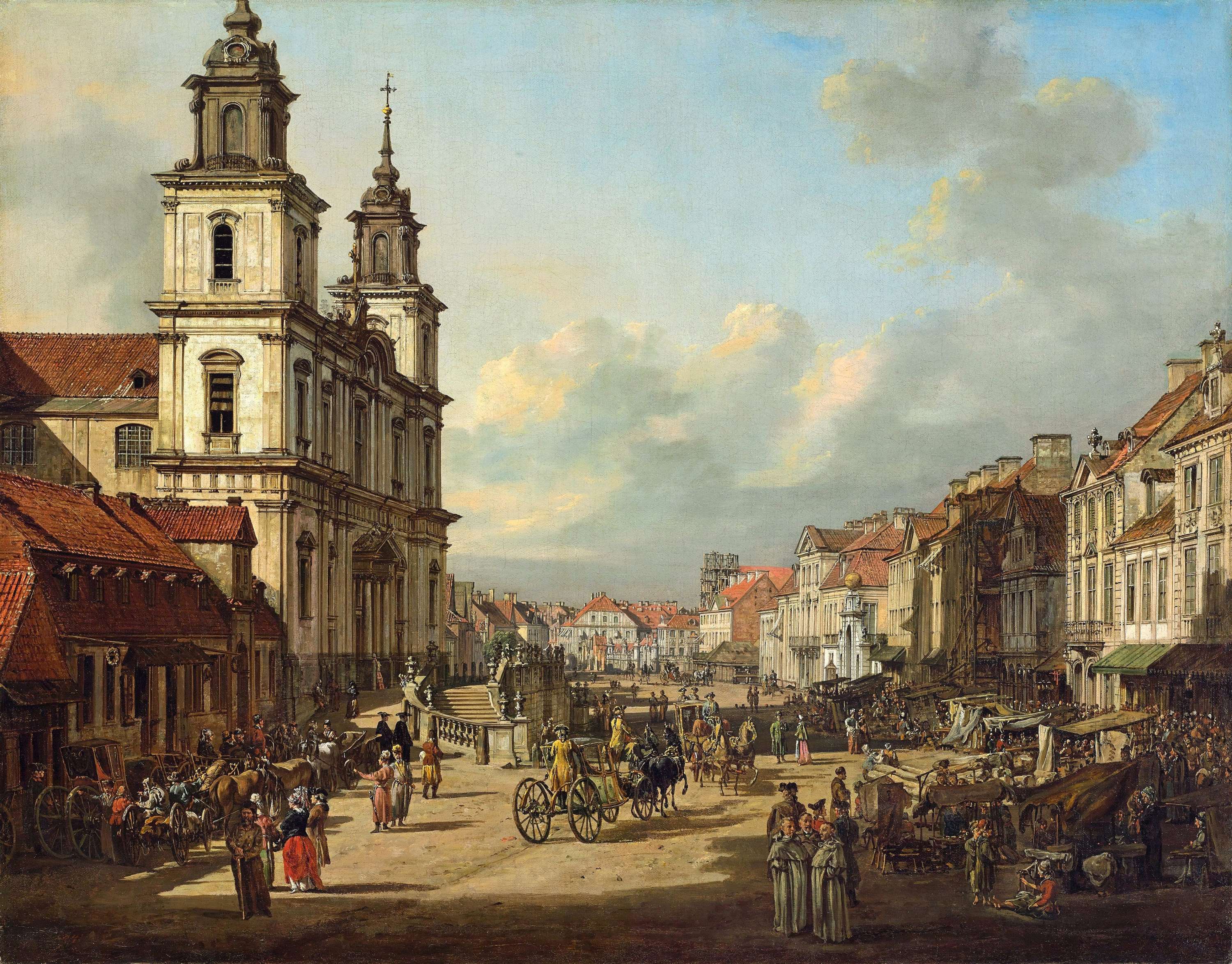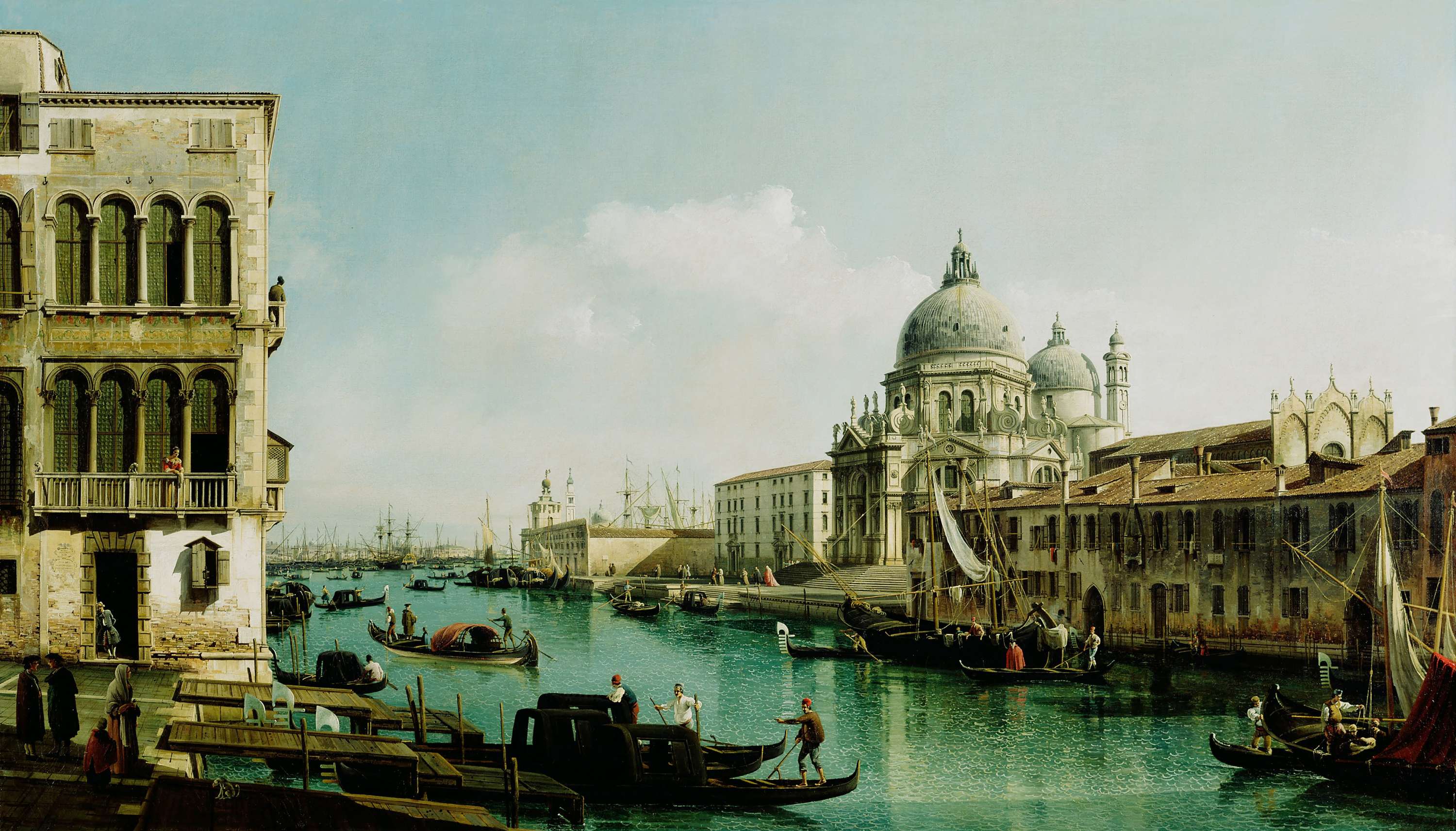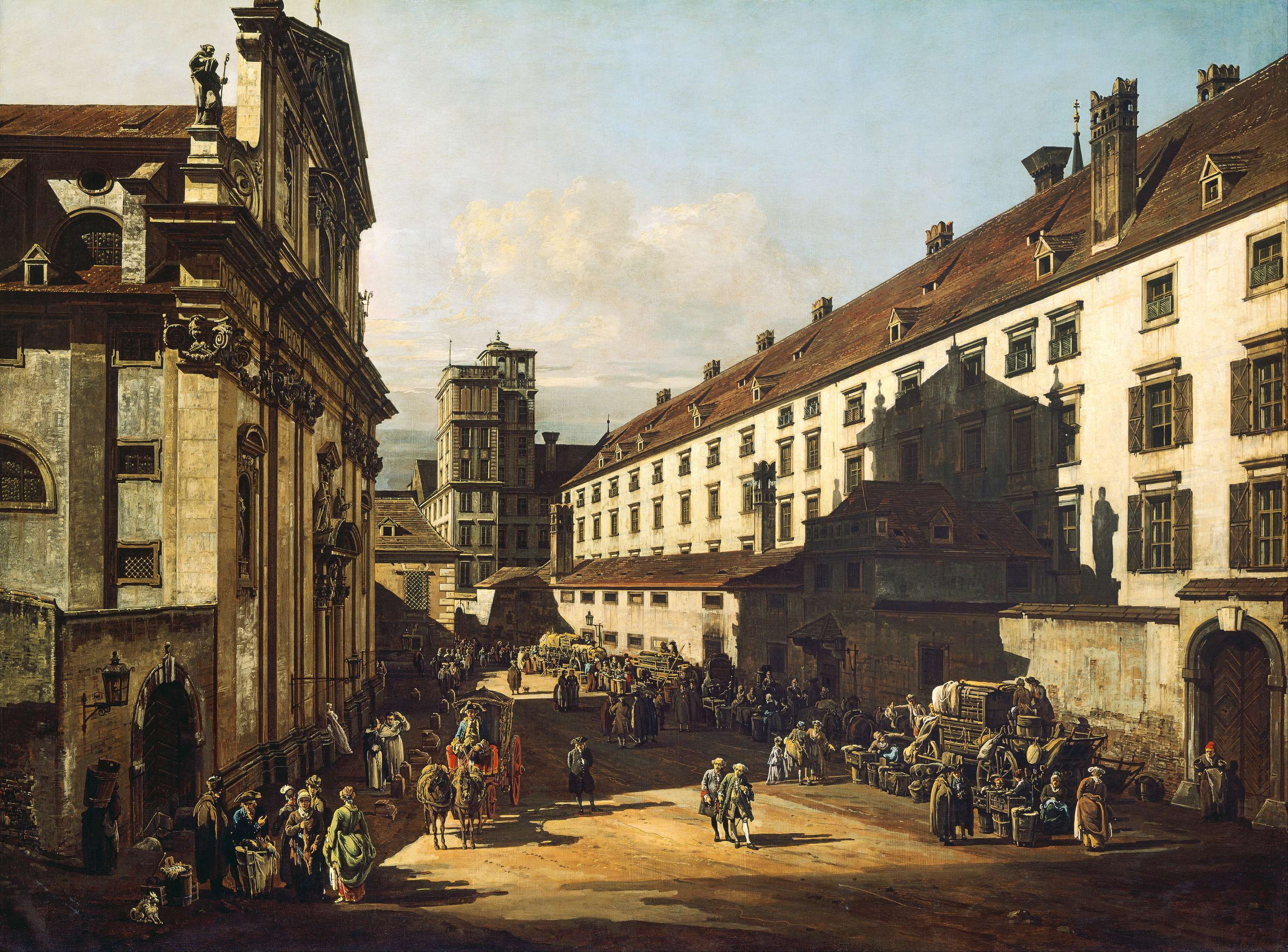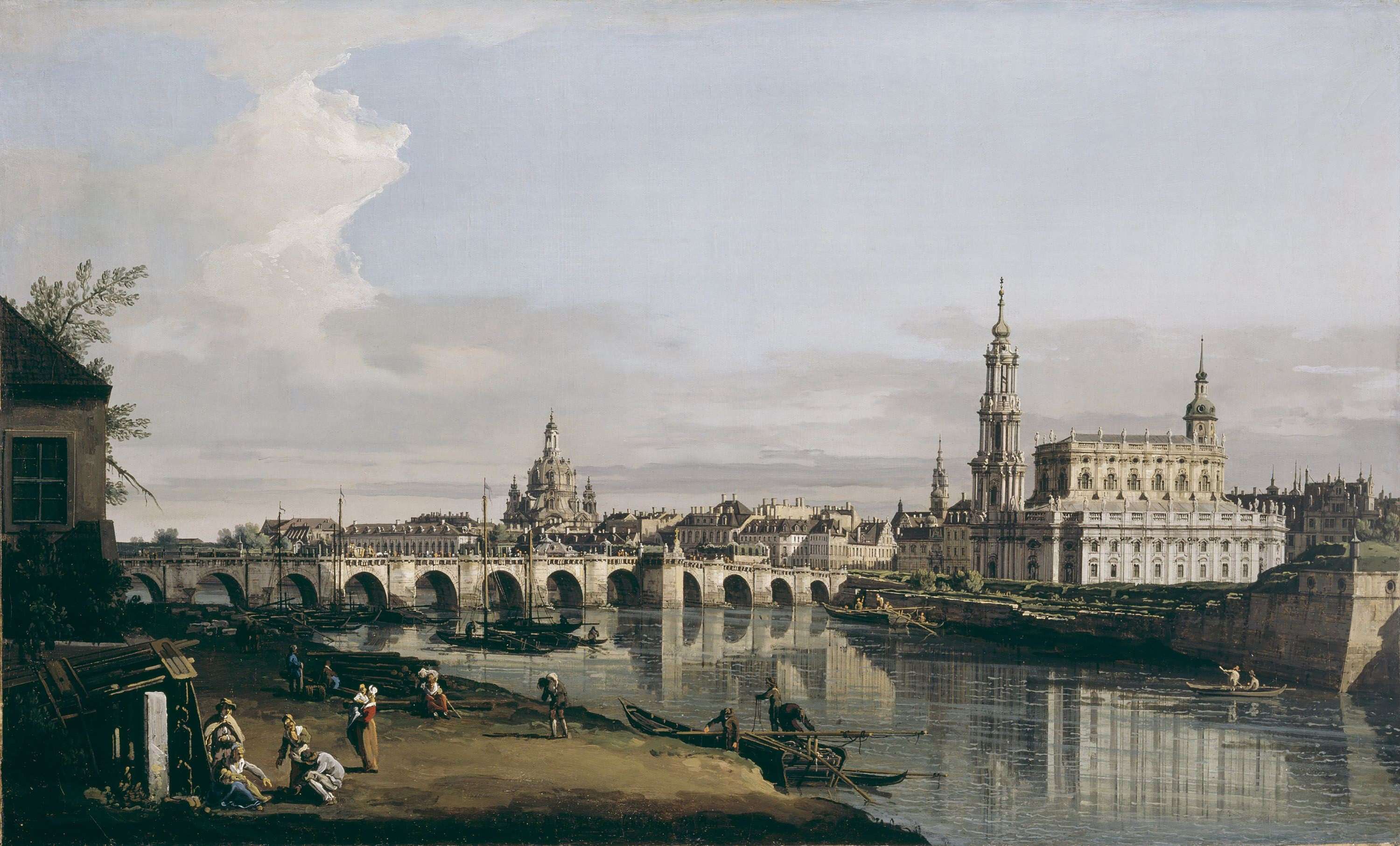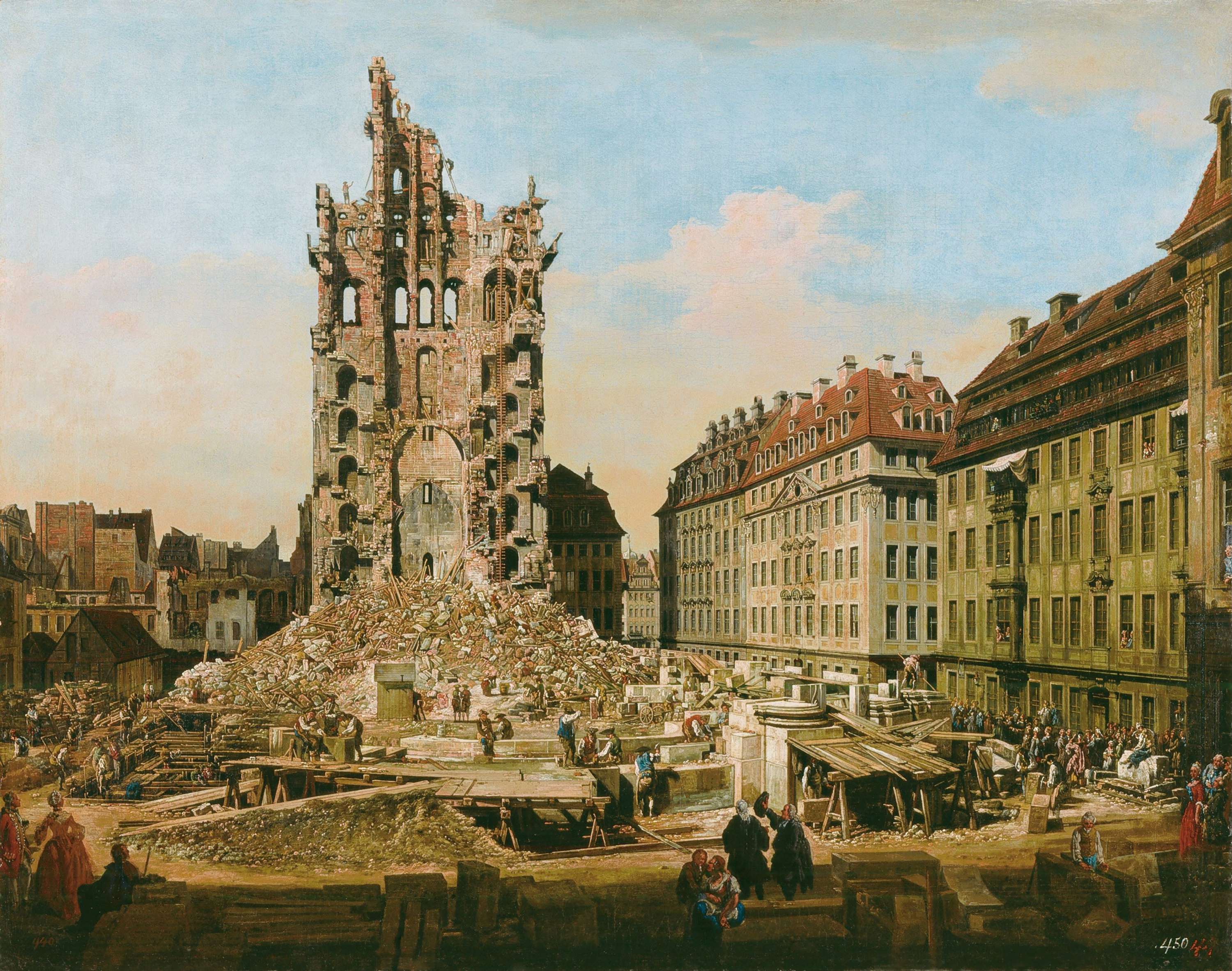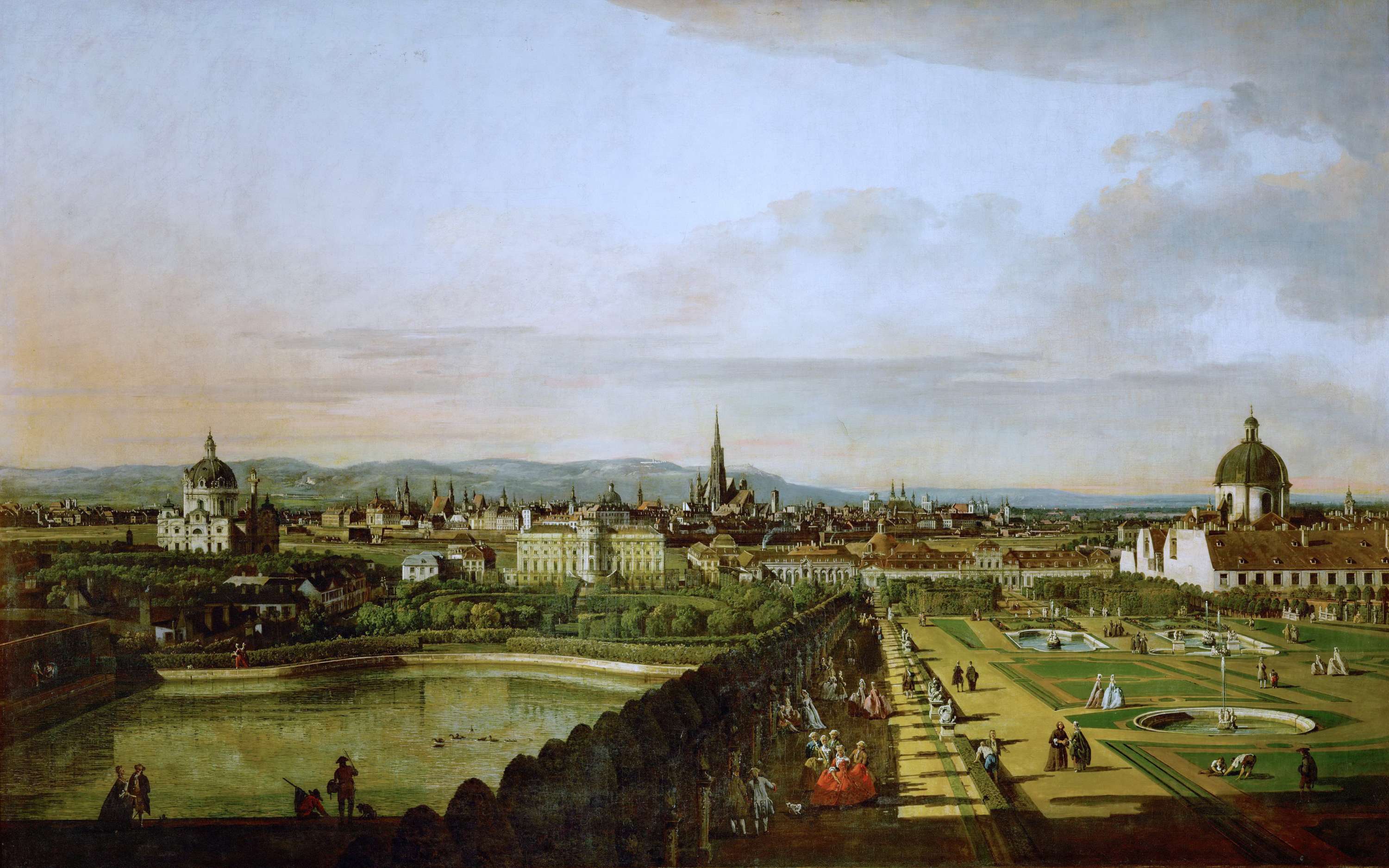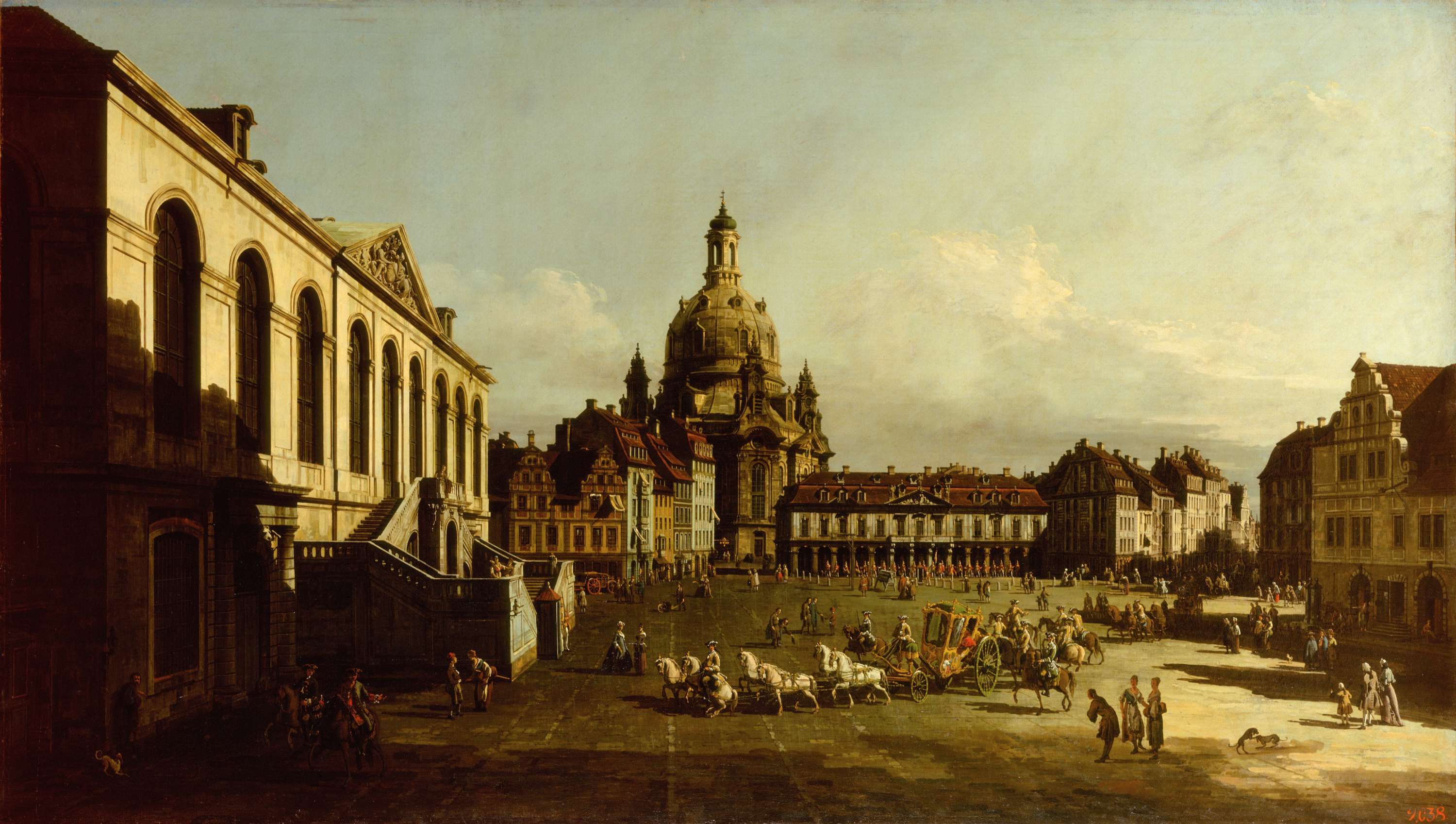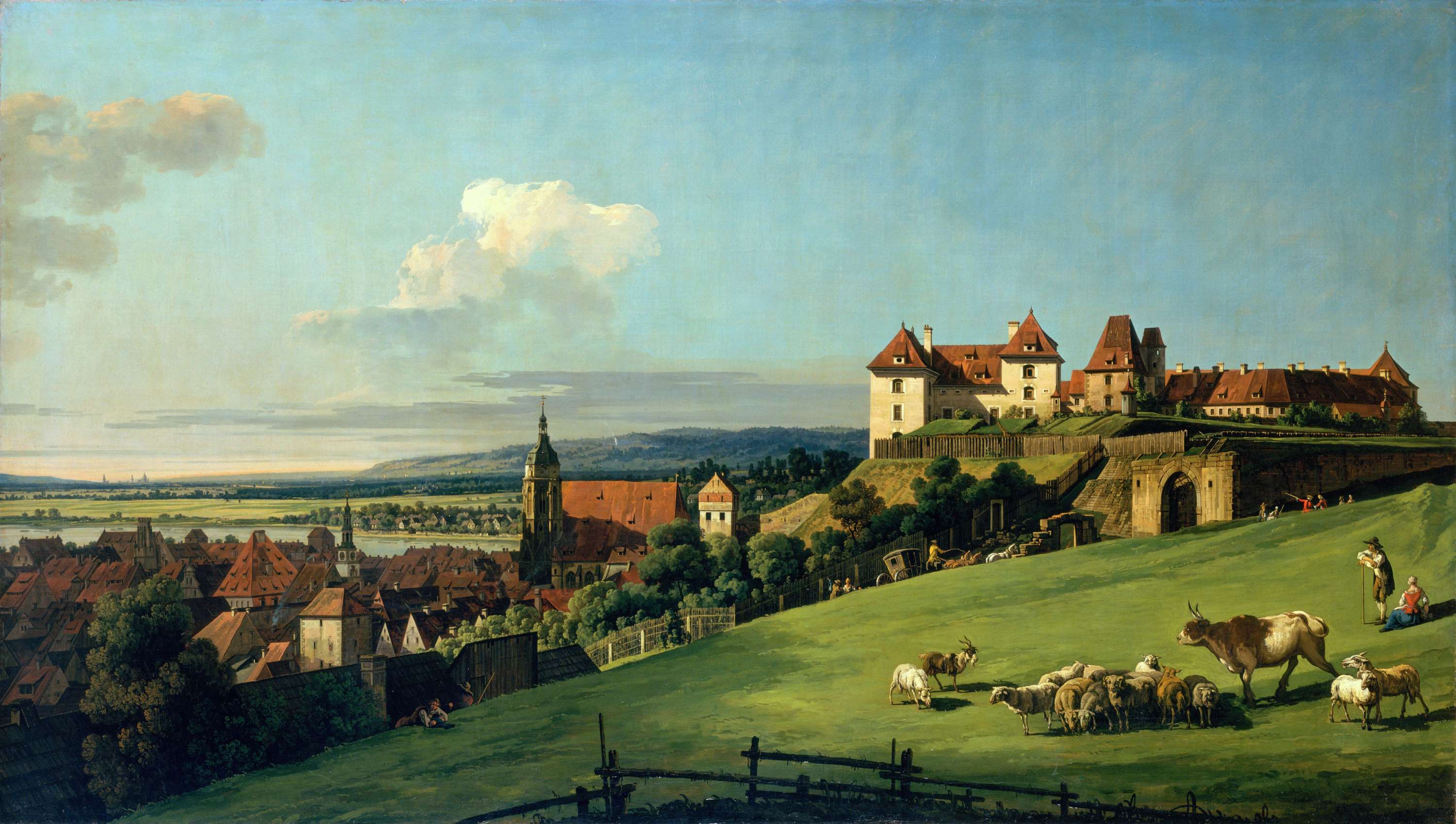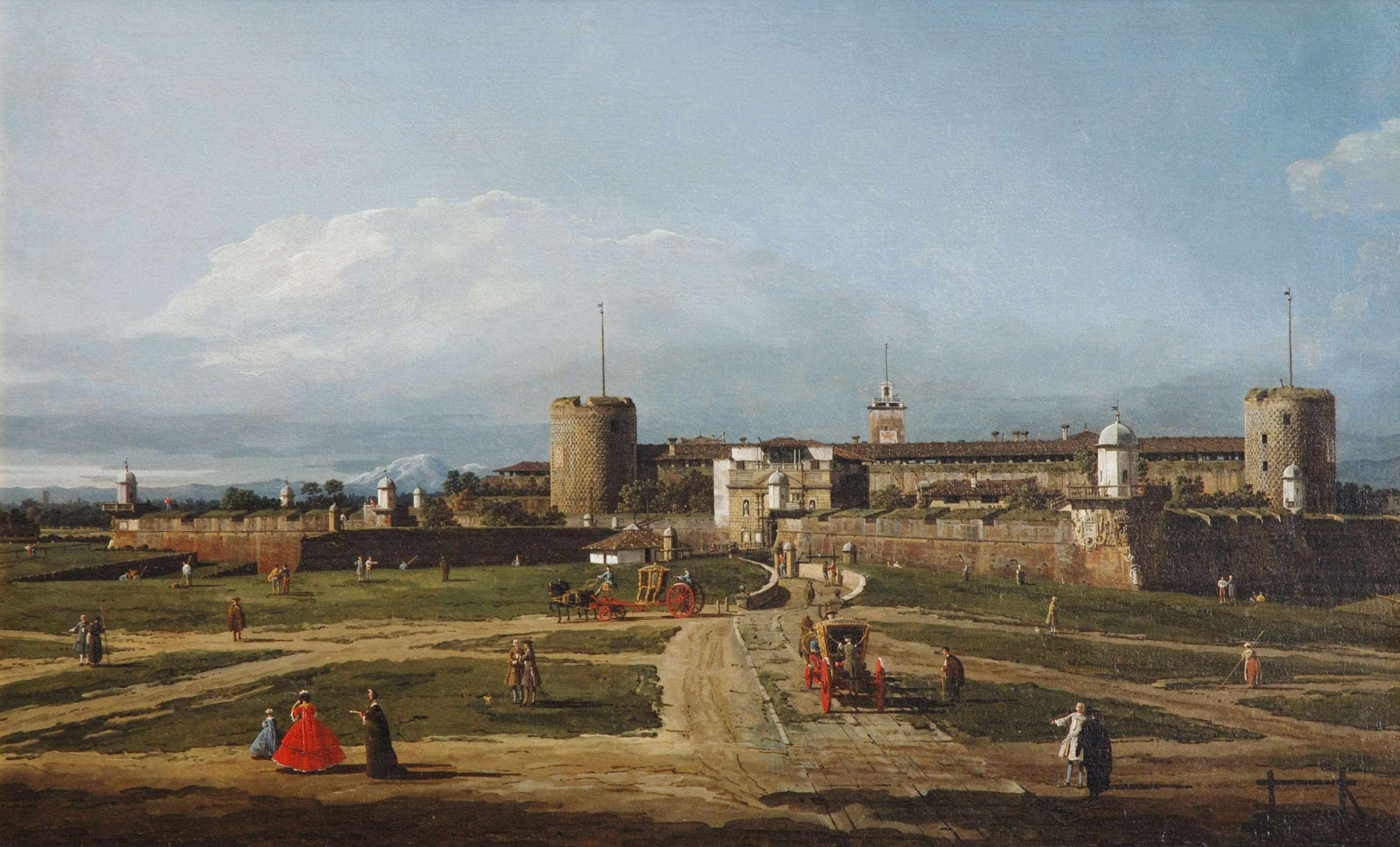Bernardo Bellotto
Cityscape
1743–1778
Bernardo Bellotto, (c. 1721/2 or 30 January 1721 – 17 November 1780), was an Italian urban landscape painter or vedutista, and printmaker in etching famous for his vedute of European cities (Dresden, Vienna, Turin and Warsaw). He was the pupil and nephew of the famous Giovanni Antonio Canal Canaletto and sometimes used the latter’s illustrious name, signing himself as Bernardo Canaletto. In Germany and Poland, Bellotto called himself by his uncle’s name, Canaletto.
Bellotto’s style was characterized by elaborate representation of architectural and natural vistas, and by the specific quality of each place’s lighting. It is plausible that Bellotto, and other Venetian masters of vedute, may have used the camera obscura in order to achieve superior precision of urban views.
Bellotto’s early work bears strong features of his uncle’s style, becoming more individual and distinguished in later years with clear inspiration of Dutch landscape painting with massed clouds, cast shadows and rich foliage. His colouring is colder and characterized by a steely grey.
The last period of the artist’s work is assessed as distinct from the earlier stages with emphasis on the immediacy of observation, striving for a generic treatment of staffage, ability to capture the atmosphere of the place and visible transformation of his painting which become more colorful with warmer tones. For the first time he also undertook historical subjects including Election of Stanislaus Augustus (1778) for the King and Entry of Jerzy Ossoliński into Rome in 1633 (1779) commissioned by Józef Maksymilian Ossoliński. Bellotto created a school of painting which was later continued and developed by Zygmunt Vogel and Marcin Zaleski.
